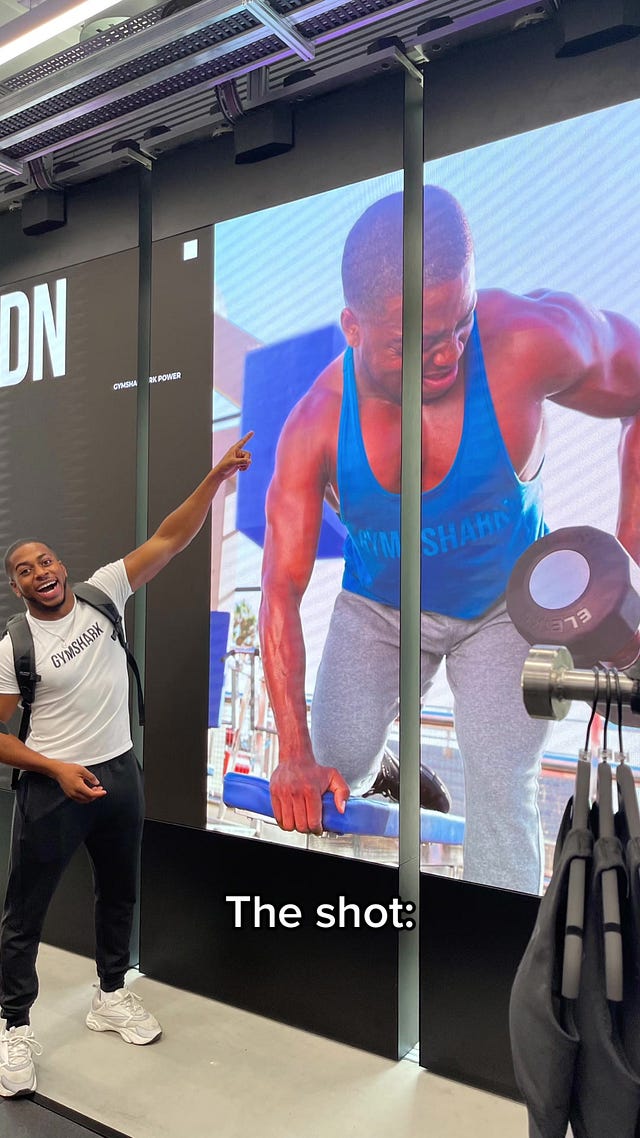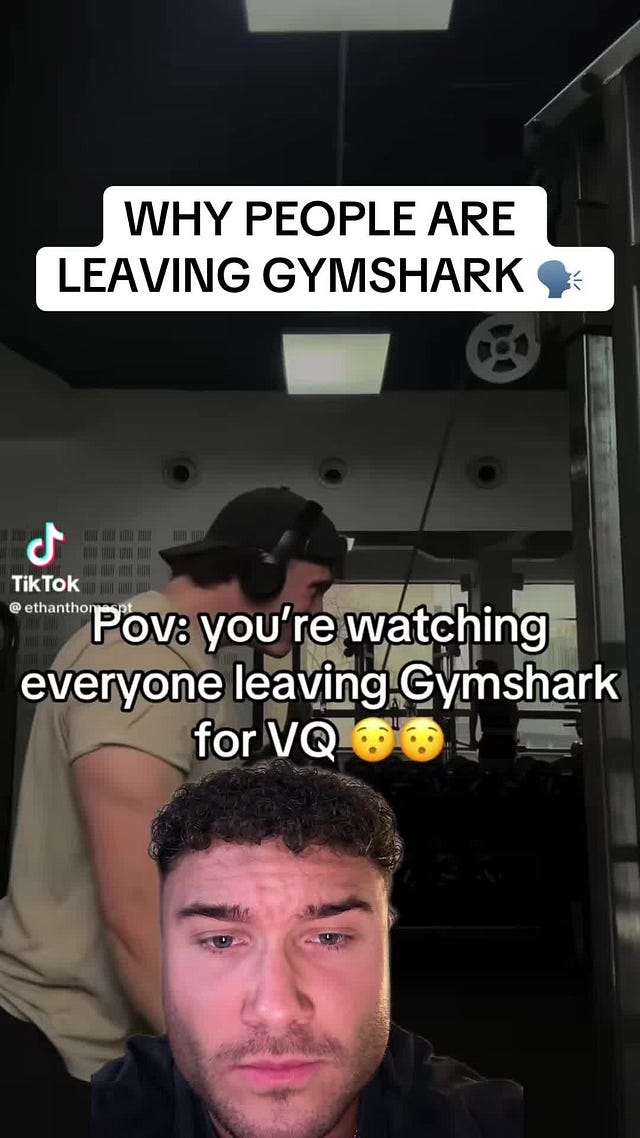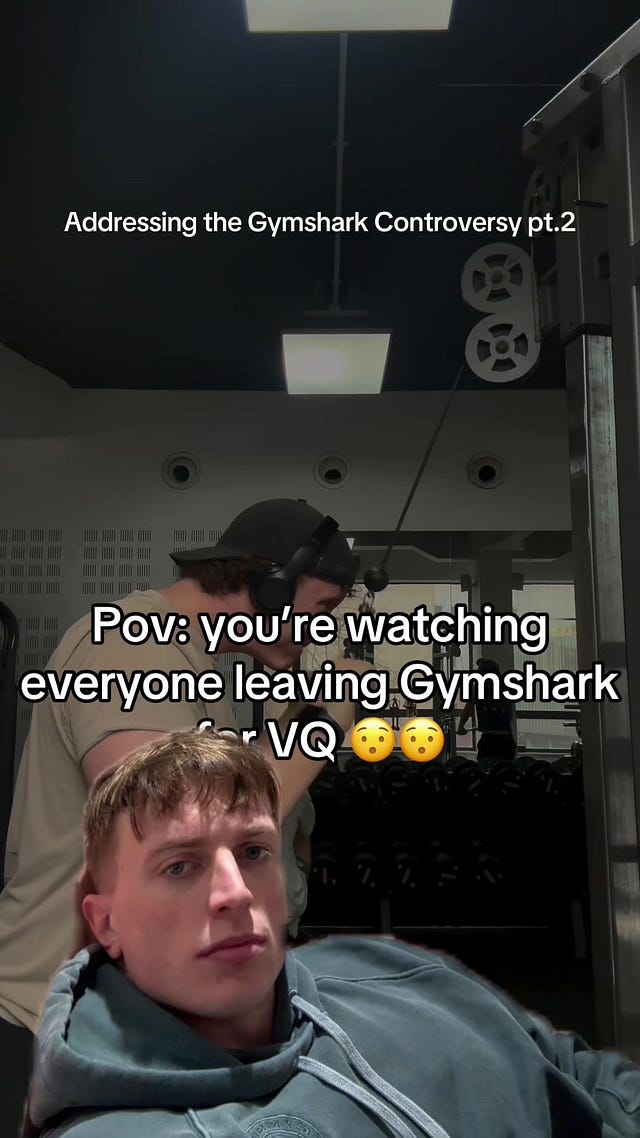Predictions Schmedictions
We’ve given tomorrow’s podcast to a cast of thousands (17 to be more accurate) from the Unofficial Partner WhatsApp Group, to share their bets for 2025.
The result is a blizzard of punts, from safe to overreaching.
Saudi and AI are largely absent from the list, possibly for being too obvious.
The gamut runs from the return of fun to the first million pound woman cricketer; Single location challenger leagues, the rise of gaming first formats through to the misplaced entitlement of Lionesses fans.
Geographies feature: From the rise of India, through to the micro strategies of Morocco, Rwanda and Albania.
Women’s sport is a biggie, both in terms of the impact of the calendar moments - the Lionesses at the Euros and the Women’s Rugby World Cup in the UK this year - through to the inevitable backlash from the populists and their useful idiots, who feel emboldened by Trump, Musk and Jordan Peterson to go after anything that smells of societal progress.
And how will the marketing industry respond to this wave of hate? Will their purpose-led strategies wilt in the face of the hate, or will they double down, showing themselves to be more than opportunistic virtue signallers?
A lot of sponsorship money hangs on that question, as sport has aggressively sold itself as a purpose platform through the last decade or more.
The second coming of the crypto money will be another test, coming just as many rights holders are either skint or trying to work out how to stop spending the money they have so badly.
We’ll see I guess.
The full list of contributors for the podcast is here:
Dame Tracey Crouch on the Football Regulator
Kieran Maguire on Richard Masters
Fiona Harold on golf's big merger
Jason Siegel on VR
Jenny Mitton on future rugby
Steve Martin on big ideas
Jo Redfern on gaming formats
Nic Coward on India
Rich Johnson on single location challengers
Nathan Homer on Rwanda and Albania
Professor Simon Chadwick on Morocco
Maggie Murphy on the entitlement of Lionesses fans
Siddharth Raman on rights holders as digital platforms
Andrew Umbers on mega agencies
Beth Barrett-Wild on the first million pound woman cricketer
Simon Heap on the importance of fun
Andy Meikle on micro monetisation models
Search Unofficial Partner wherever you get your podcasts.
AI has solved for the Jon Tibbs problem
Sports communications impresario Jon Tibbs got in touch and asked, as he so often does: who was the most effective communicator in the sports business in December 2024?
My answer is to be typed up and take its place in the JTA Communicator of the Month Website Based Thought Leadership Series.
It’s a question about which Jon Tibbs is obsessed, forever pestering me with questions as to the identity of the most effective communicator in the sports business in December 2024.
Zoom calls. WhatsApp messages. Shouting at me through the narrow horizontal window on the top of the 207 bus. His face squeezed through the gap, spittle running down the glass.
Let it go, I say to him: It’s a question that’s just too big, it will always lie just beyond our understanding.
But I buckled.
My first nomination was of Our Glorious Leader, Gianni Infantino, for his flawless announcement of the 2034 FIFA World Cup bid winner.
But I was advised that this wouldn’t be in keeping with the upbeat spirit of the award.
So, instead, I went for a very January 2025 solution, which is to ask AI.
There was a time - from the publication of the Gutenberg Bible in 1452, to about last April - when the job of writing something was carried out by actual human beings.
But AI has solved for the Jon Tibbs problem: It’s removed the friction of thinking about something and then typing it.
The gods of Silicon Valley have come to my rescue by creating a marketplace based on industrialised stealing.
So, I opened Perplexity and typed ‘Who was the most effective communicator in the sports business in December 2024?’
The answers were grimly predictable and delivered in the relentlessly upbeat yet colourless voice of a second jobber at a mid ranking consultancy firm:
Nike’s “Winning Isn’t Comfortable” Campaign: Nike returned to its roots with this campaign targeting casual runners. The ads resonated globally by portraying the struggles and triumphs of everyday athletes, reinforcing their mission to inspire all bodies as athletes.
Liverpool FC’s Farewell to Jurgen Klopp: The club executed an emotional long goodbye for manager Jurgen Klopp, blending heartfelt storytelling with impactful branding. This approach struck a chord with fans and showcased effective emotional communication.
Mercedes-AMG Petronas F1’s Tribute to Lewis Hamilton: The team marked Lewis Hamilton’s departure with a poignant video campaign, highlighting his legacy through emotive content that transcended his on-track achievements.
NFL’s “Simpsons” Alt-Cast: During a Bengals vs. Cowboys game, the NFL introduced a “Simpsons” universe broadcast. By blending sports and pop culture, this innovative approach captivated younger audiences and created viral social media buzz.
WNBA All-Star Game Activations: The WNBA shattered viewership records and became a prime platform for brand activations, capitalizing on the growing momentum of women’s sports and sparking increased media attention.
Now…as we’ll agree, there are some issues with these answers.
First, they have ignored Jon Tibbs’ central question - who was the most effective communicator in the sports business in December 2024? - and instead sought to answer a version of it, which is easier, and which was available to its data reservoir of stolen thoughts (that’s a half decent album title btw).
Rather than selecting an individual - Gianni Infantino, Patrick Nally, or the Archbishop of Canterbury, say - the AI instead offers a random load of news headlines, followed by overly positive generic praise which a stupid person could easily mistake for reasoned analysis.
So on and on we go, interrogating the data further (higher level stealing).
At each step, ChatGPT, NotebookLM and its mates offer up crap but plausible answers, each of which it claims are moments which exemplified creativity, emotional resonance, and cultural alignment in sports marketing and communication.
FFS, I could go to Joe Pompliano for that sort of insight.
Cut to: The clever conclusion.
2025 is when Generative theft AI is embedded in to every app and operating system. It will dictate not only what we write, but what we read and therefore what and how we think.
We’re entering an era of the summary, when everything is being condensed by everyone all the time.
And that includes yours and my own life’s work.
Every random shower thought that made its way to Twitter, every word mumbled in to a podcast microphone or captured whilst delivering that thrillingly counterintuitive keynote conference speech.
It’s all in the machine, ready for someone else to take and use in their own website based thought leadership series.
Most of the time it’ll be ok. I don’t want to actually think about writing emails to that bloke I met at Leaders in 2019 who mistook my drunken enthusiasm for his turnkey-software-as-service-tech-stack as a buy signal.
But what about the important stuff?
My fear is that I’ve disappointed Jon Tibbs on a fundamental level, and that despite the noise, we’re no closer to knowing with absolute certainty the most effective communicator in the sports business in December 2024?
It’s more than I can bear.
Where do you stand on Gymshark?
Keep an eye on the Gymshark v Nathaniel Massiah case due to come back to court on 15th January and could have implications for how the relationship between creators and brands evolves.
It turns on the phrase ‘reasonable covenants’.
What happened?
This is about Gymshark having decided not to renew junior powerlifting champion Nathaniel Massiah, who has been a Gymshark athlete since he was 17.
Here’s a clip from happier times, with Massiah plugging the brand:
 Tiktok failed to load.
Tiktok failed to load.Enable 3rd party cookies or use another browser
From that to this, the same athlete outside court, with his lawyer and agent after defending an emergency injunction just before Christmas.
It turns around whether Massiah’s new deal to promote YoungLA contravenes a restrictive covenants from his previous Gymshark contract.
The court gave 3 options on the day (to hold over to 15th Jan for a full hearing on the issues; cut issues down or have 20 mins argument each side, as the listing was only for 1 hour.
Both sides agreed to hold over to 15th Jan for a full hearing - so in essence the injunction sought but the court wasn’t so persuaded that it could give on the day and so gave those options.
Why do we care?
The case has potential to have larger implications for influencers and athletes if the court decide that the covenants aren’t reasonable - and otherwise that damages would be adequate as opposed to granting an injunction.
Growing pains?
Gymshark has been the go-to case study for D2C brand building over the last five years. Its use of creators is central to that. The more money the company makes, and the more prominent its founder becomes on the podcast circuit, the greater the push for a bigger cut from the gym bunnies doing the heavy lifting…
It’s quite hard from this distance to get a proper feel for the story, as whether you’re for or against Gymshark seems to come down to if they’re paying you or not.
Here’s some prime beef:
 Tiktok failed to load.
Tiktok failed to load.Enable 3rd party cookies or use another browser
And here’s the counter.
 Tiktok failed to load.
Tiktok failed to load.Enable 3rd party cookies or use another browser
The Unofficial Second Brain
How best to use the new generation of AI tools to unlock the value of the Unofficial Partner archive of content, across 450 podcasts and as many Substack newsletters?
That’s one of my jobs for 2025.
And I’m open for ideas from would-be collaborators from across the industry.
Context
I’ve spent a while tinkering with AI tools, which involves a regular cycle of love and hate, in which I find myself falling for the sell/promise of ChatGPT, Claude, Gemini etc and then being ever so slightly disappointed and/or irritated by the mundanity of the outcomes. This is followed by someone telling me that it’s my fault because my prompts were unsophisticated. And on it goes.
I’ve landed on Google’s NotebookLM for two reasons.
Trust. The writer Steven Johnson has been involved in its development and he now acts as Editorial Director of Google DeepMind - I met and interviewed him in a previous life and believe him to have a genuine insight in to our relationship with technology. I also I trust his instincts. This is relevant when there’s so many bad actors around, either obviously malevolent or just complacent about the decisions they are making in relation to AI and its real world outcomes.
Privacy. NotebookLM offers the user greater control of sources. This allows me to create discrete little worlds, based on need and interest. The AI is not taking from the whole world, so I can trust the source material. Yes, you can do similar with Claude Projects and Custom ChatGPT but I find the interface friendlier. You can also put YouTube videos straight in to the notebook, which is handy.
Futureproofing. Google were asleep at the wheel, were caught out by OpenAI but they will come back strong in 2025.
My starting point for building the Unofficial Second Brain is The Bundle, our regular podcast and newsletter on the sports media market.
I’ve loaded each episode of the podcast in to one Notebook, along with each accompanying newsletter, which is made up of the preparatory notes and links compiled by myself, Murray Barnett and Yannick Ramcke.
Then I added some ‘Bundle adjacent’ material.
For example, our recent podcast on FIFA+ and some newsletter pieces that talked about sports media and streaming, including a couple of podcasts on the NBA rights deal and the argument made by Sam Sadi about the impact on the rights market of the opening up of US betting.
What else?
I’m a big fan of Mark Oliver’s analysis of the market, so added our two podcasts with Mark and some of his written work for Sportcal.
Evan Shapiro’s recent prediction piece is in there too. Our Claire Enders podcasts and others are there.
Having loaded the sources, I then try to turn it in to interesting outcomes.
This is where I think I need help.
I’ll leave you with this for now, it’s very WIP obvs.
Below is a study guide Q&A type thing derived from the sources listed above, and at the bottom is the answer the second brain gave to the question, Is FIFA+ a White Elephant?
Anyone with thoughts on progressing this a stage further, hit me up.
The Bundle Study Guide
Short-Answer Quiz
What are ENPs and LMRs in the context of media rights deals?
Why did USA Network lose the rights to broadcast WWE programming in 2000?
Why has Warner Bros. Discovery’s (WBD) stock price fallen to all-time lows?
What are the potential risks associated with sports leagues operating in-house DTC channels?
What factors have contributed to the recent increase in viewership for WNBA games?
What is Venu Sports, and why was its launch blocked?
Why is achieving profitability difficult for women’s football leagues compared to men’s football leagues?
What is the significance of the Jake Paul vs. Mike Tyson fight for Netflix’s sports strategy?
Why is there a concern about fee growth for second-tier sports rights in the US market?
What is FIFA’s strategy for its streaming platform FIFA+?
Short-Answer Quiz Answer Key
ENP (Exclusive Negotiating Period) is a period where the rights holder negotiates exclusively with the current rights holder before opening up bidding to other parties. LMR (Last Matching Right) allows the current rights holder to match any competing offer after the ENP. Both contain economic and non-economic considerations.
USA Network lost the rights because they were unable to adequately match all aspects of competitor Viacom’s offer, as required by the right of refusal clause in their contract. The Delaware Supreme Court ruled in favor of WWE, stating that matching all aspects, including non-economic terms, was necessary.
WBD’s stock price decline is attributed to CEO David Zaslav’s hard-nosed negotiation style, which has strained relationships with advertisers, sports leagues, and Hollywood talent. This has led to concerns about the company's long-term financial health.
DTC channels require significant upfront investment, technological expertise, and marketing capabilities, which may be challenging for leagues lacking these resources. There is also a risk of cannibalizing existing revenue streams from broadcast deals. Additionally, leagues are accustomed to guaranteed revenue from licensing, while DTC success is not assured.
Increased viewership can be attributed to the rising popularity of women’s sports, strategic scheduling of events like the All-Star game, and growth in broadcast partnerships with networks like ESPN. These factors have increased the reach and exposure of WNBA games.
Venu Sports is a planned “skinny bundle” of premium sports channels from Disney, Fox, and WBD, aimed at cord-cutters and casual sports fans. It was blocked due to antitrust concerns, as Fubo, a competing distributor, argued it would unfairly cannibalize their subscriber base. The court agreed, as Venu could offer lower prices using internal transfer pricing and bypass typical bundling requirements.
Women's football leagues typically have lower revenue generation compared to men's leagues due to factors such as smaller audiences, lower sponsorship deals, and lower media rights fees. This limited revenue makes it challenging to invest in player salaries, infrastructure, and marketing, further impacting profitability.
The Jake Paul vs. Mike Tyson fight demonstrates Netflix’s interest in attracting viewers through celebrity-driven events rather than focusing on acquiring traditional sports rights. This strategy prioritizes entertainment value and attracting wider audiences over established sporting fan bases.
The concern arises from the significant fee increases for top-tier rights like the NCAA and NBA, potentially leading to a contraction in the overall market. As media companies have finite budgets, these increases may make it financially challenging to acquire second-tier rights, leading to potential cuts.
FIFA is seeking to expand FIFA+ by attracting financial investors, particularly in the US and the Middle East, to gain a minority stake in the platform. This strategy aims to raise capital for further development and content acquisition while exploring new revenue streams beyond traditional broadcasting rights.
Essay Questions
Analyze the impact of streaming services on the traditional sports broadcasting landscape. How has the entry of players like Netflix and Amazon changed the dynamics of sports media rights negotiations?
Evaluate the viability of direct-to-consumer (DTC) streaming services for sports leagues. What are the potential benefits and challenges, and under what circumstances might a DTC approach be most successful?
Discuss the challenges and opportunities for women’s sports in securing lucrative media rights deals. What factors influence the valuation of women’s sports rights, and what strategies can leagues and broadcasters employ to promote growth in this area?
Analyze the role of exclusivity in sports media rights. How does exclusivity impact the value of rights, the viewing experience for fans, and the competitive landscape for broadcasters?
Discuss the evolving relationship between social media platforms like YouTube and sports content creators. How are platforms like YouTube being leveraged for audience reach and revenue generation, and what are the implications for traditional sports broadcasting models?
Glossary of Key Terms
ENP (Exclusive Negotiating Period): A period in a media rights contract where the rights holder negotiates exclusively with the current broadcaster for a renewal before opening up bidding to other parties.
LMR (Last Matching Right): A contractual right granting the current broadcaster the option to match any competing offer for media rights after the ENP.
DTC (Direct-to-Consumer): A business model where sports leagues or organizations distribute content directly to viewers via their own streaming platforms, bypassing traditional broadcasters.
Skinny Bundle: A smaller, more focused package of television channels offered at a lower price than traditional cable or satellite packages, typically focusing on specific genres like sports.
Cannibalization: A situation where a new product or service from the same company reduces the sales of its existing products or services.
Antitrust: Laws and regulations designed to promote competition and prevent monopolies, ensuring a fair marketplace.
Preliminary Injunction: A court order that prevents a party from taking a specific action until a full hearing can be conducted.
FTA (Free-to-Air): Television channels that are available to viewers without requiring a subscription fee, typically funded through advertising.
Rights Fee: The amount paid by a broadcaster to a sports league or organization for the right to broadcast their events.
Sub-Licensing: The practice of a broadcaster selling a portion of their acquired media rights to another broadcaster, often for specific territories or platforms.
Joint Venture (JV): A business arrangement where two or more parties agree to pool their resources and expertise to pursue a specific business opportunity.
P&L (Profit and Loss): A financial statement that summarizes a company’s revenues, expenses, and profits over a specific period.
Escape Velocity: A metaphor describing the point at which a trend or industry achieves significant momentum and becomes self-sustaining.
Cord-Cutter: A person who cancels their traditional cable or satellite television subscription in favor of alternative streaming services.
Cord-Never: A person who has never subscribed to traditional cable or satellite television, relying solely on streaming services for their content consumption.
Essay Question - Is FIFA+ a White Elephant?
It is too early to definitively label FIFA+ a "white elephant," but the platform faces significant challenges that raise concerns about its long-term viability. The sources highlight several factors contributing to this uncertainty:
Financial Sustainability: FIFA has historically struggled to generate substantial revenue outside its quadrennial World Cup. Its ambitious plan to launch an expanded 32-team Club World Cup in 2025, aimed at tapping into lucrative club football markets, has faltered. Initial revenue targets of $1.5 billion have proven unrealistic, forcing FIFA to drastically reduce its expectations and seek external funding for FIFA+ [1-4]. This suggests a lack of confidence from the market in FIFA's ability to monetize its content effectively, raising doubts about the financial underpinnings of FIFA+ as well.
Content Value Proposition: FIFA+ offers an extensive library of 40,000 matches annually, including women's games. However, the attractiveness of this content to a paying audience is uncertain [2, 4]. The platform lacks premium rights to top-tier club competitions, which are crucial for attracting and retaining subscribers in a competitive streaming landscape. FIFA's rejection of bids from broadcasters like Fox and NBC for the Club World Cup, despite offering them at a reduced price, indicates a mismatch between FIFA's valuation of its content and market demand [5, 6]. This disconnect raises concerns about the platform's ability to acquire the content necessary to compete with established streaming giants.
DTC Expertise and Competition: Launching a successful DTC platform requires significant expertise in areas like customer relationship management, marketing, and technology [3, 7]. FIFA's experience in these areas is limited compared to established streaming services like Netflix, Amazon Prime Video, and Disney+, which have invested heavily in building sophisticated platforms and cultivating loyal subscriber bases. FIFA+ faces an uphill battle to compete with these established players and gain a foothold in an increasingly saturated market.
Yannick Ramcke, General Manager of OTT at OneFootball, echoes this sentiment in his analysis of FIFA's strategy:
“I don’t believe in leaks or reports [about seeking funding for FIFA+] be circumstantial, there’s always intention: The below-expectations bid from Apple, which would be a picture-perfect fit for the re-invented FIFA Club World Cup at first glance, doesn’t live up to the revenue guarantees made to clubs persuading them to participate. FIFA thinks it might have to come up with the money in another way, but sustainable [business] or credible [bargaining chip] is different.” [3, 7]
His insights suggest that FIFA's struggles with the Club World Cup and its pursuit of funding for FIFA+ are interconnected, highlighting the organization's broader challenges in navigating the evolving media landscape and monetizing its content effectively. FIFA's reliance on external funding and potential use of FIFA+ as a "bargaining chip" raise concerns about the platform's strategic direction and its ability to become a self-sustaining business.
In conclusion, while FIFA+ holds some potential to expand FIFA's global reach and showcase underrepresented competitions like women's football, its current trajectory suggests a high risk of becoming a "white elephant." The platform's financial viability, content acquisition strategy, and ability to compete in a crowded market remain significant concerns. FIFA's leadership needs to address these challenges decisively to ensure that FIFA+ becomes a valuable asset rather than a costly burden.
Interesting innit.
We’ll come back to this topic.







UP now providing bleeding edge legal analysis (and quite good!). A Renaissance pod!
Really enjoyed the Gymshark tiktoks